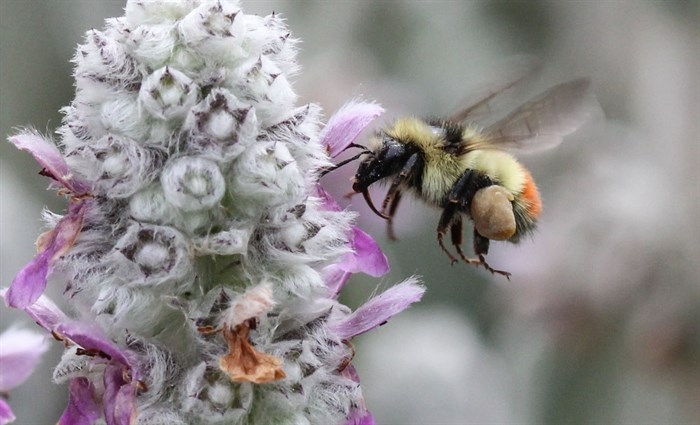Okanagan beekeepers report higher than normal mortality rates this winter

Beekeepers in the Okanagan suffered higher than usual bee mortality rates this past winter.
North Okanagan Beekeepers president Keith Rae says hive mortality has been an issue over the past decade, but this winter saw higher than normal rates of bee mortality.
“Beekeepers prepare their hives for a typical winter and last year was anything but typical,” Rae said in an email Monday, April 9.
An unseasonably warm fall resulted in overactive bees going into winter and then came the first Arctic outbreak in February, both of which may have contributed to the higher death rates.
“We don’t like it, but we do expect some colony loss through dying, failed queens, or bears or other animals damaging the hive over winter, but this winter has been harder on bees than most years,” Rae says.
He says the loss of bees may prevent some beekeepers from having enough hives to fill pollination contracts for orchards.
“Hives can be split to repopulate the colonies that were lost. It’s a lesson on being a bit more attentive to the needs of bees going into the fall, and it’s Mother Nature’s way of helping us learn from our mistakes,” Rae says.
South Okanagan apiary inspector Tim Bouwmeester agrees beekeepers have to “stay on top of their hives.”
“There are so many stresses on them nowadays, it doesn’t take much to cause problems,” Bouwmeester says.
He says winter losses of around 20 per cent are normal for B.C., but this year was worse than that.
“Some beekeepers are seeing mortality rates of 80 per cent, and others are at 10 per cent. It’s highly variable, that’s for sure,” he says.
From what Bouwmeester has seen, it appears there is no single cause for the high mortality rate.
“One beekeeper I inspected had high Varroa mite counts, which can cause bee mortality. Another had Nosema, a fungus that affects honey bees, which can also cause mortality in overwintering hives," he says.
Bouwmeester says one commercial beekeeper who lost 80 per cent of his hives will spend $250,000 to replace 1,000 lost colonies with new ones.
“You can only do that for so many years. Beekeepers are resilient, but they aren’t rich,” he says.
The province announced $100,000 in funding through the Bee B.C. program to improve bee health in the province earlier this year.
To contact a reporter for this story, email Steve Arstad or call 250-488-3065 or email the editor. You can also submit photos, videos or news tips to tips@infonews.ca and be entered to win a monthly prize draw.
We welcome your comments and opinions on our stories but play nice. We won't censor or delete comments unless they contain off-topic statements or links, unnecessary vulgarity, false facts, spam or obviously fake profiles. If you have any concerns about what you see in comments, email the editor in the link above.


